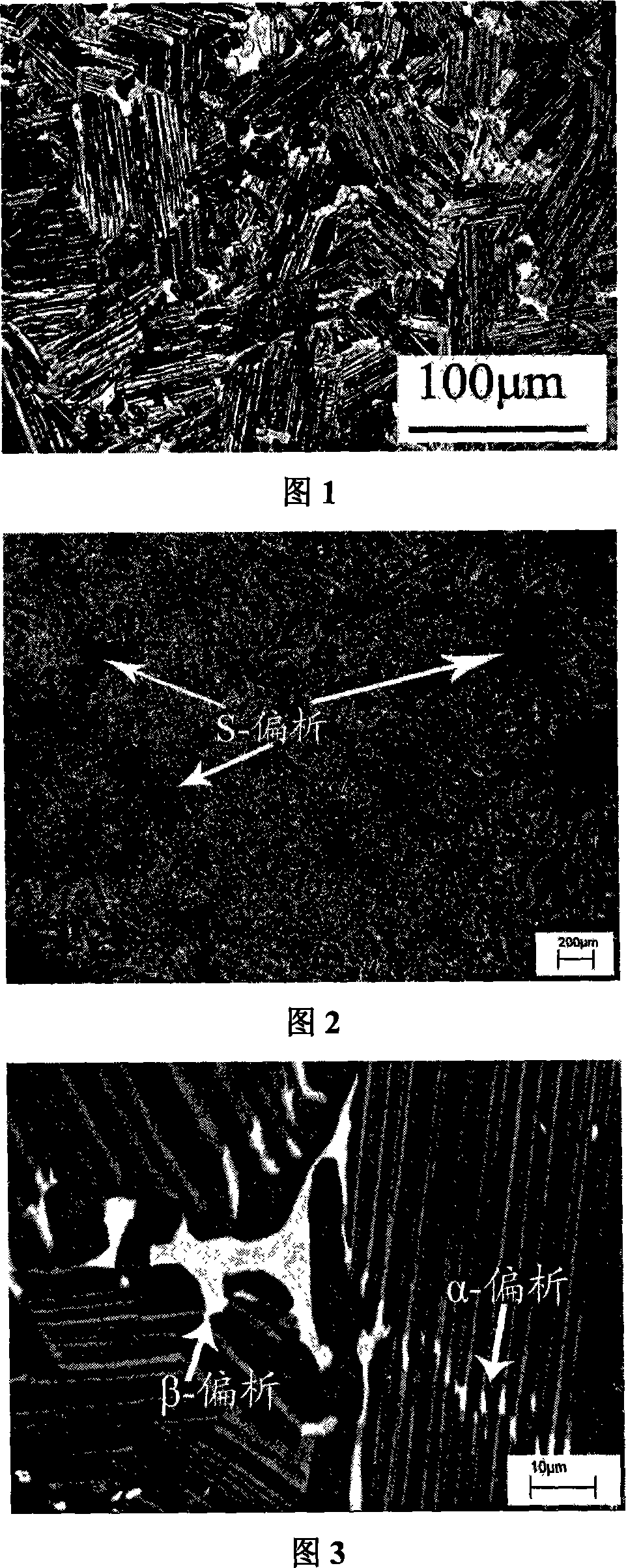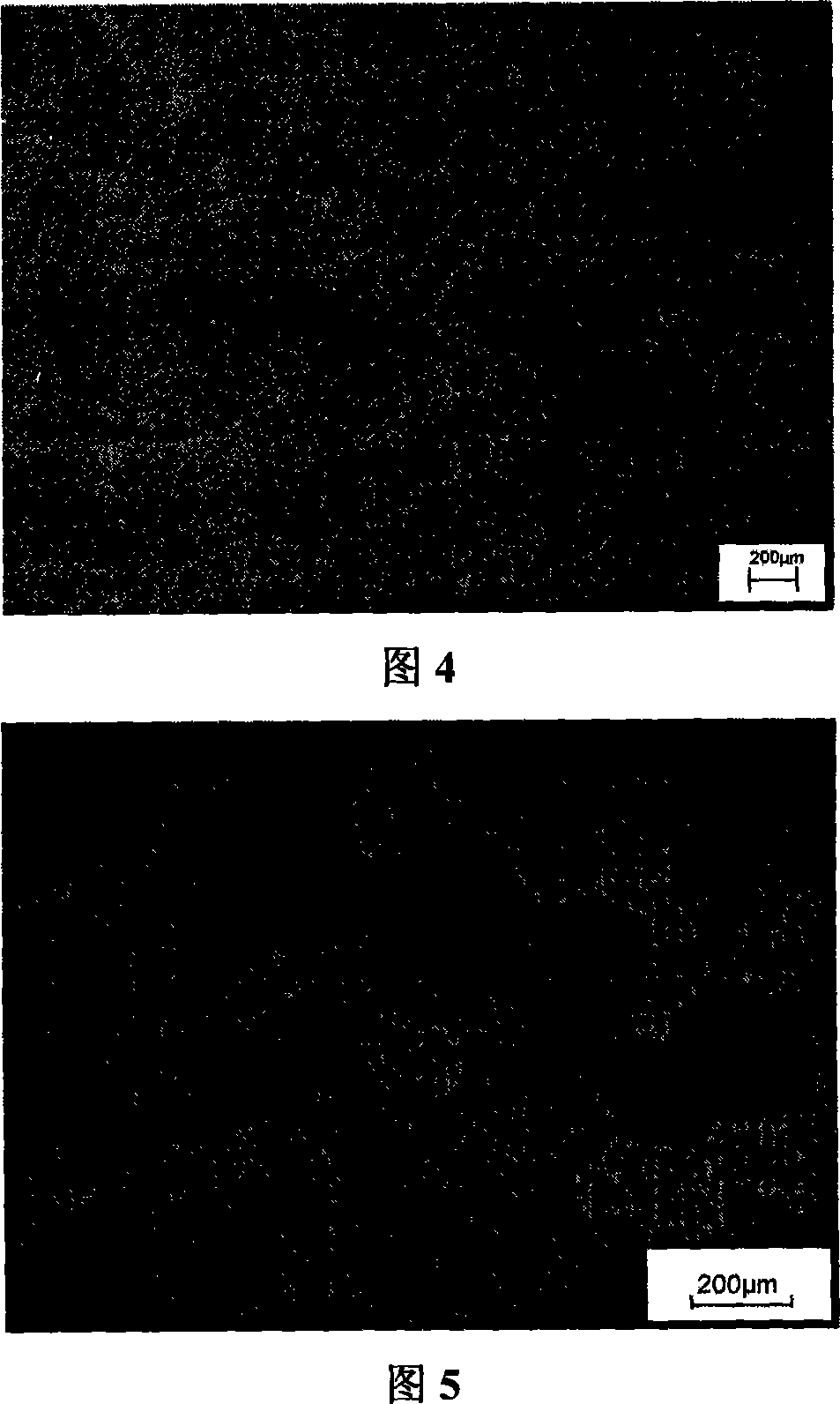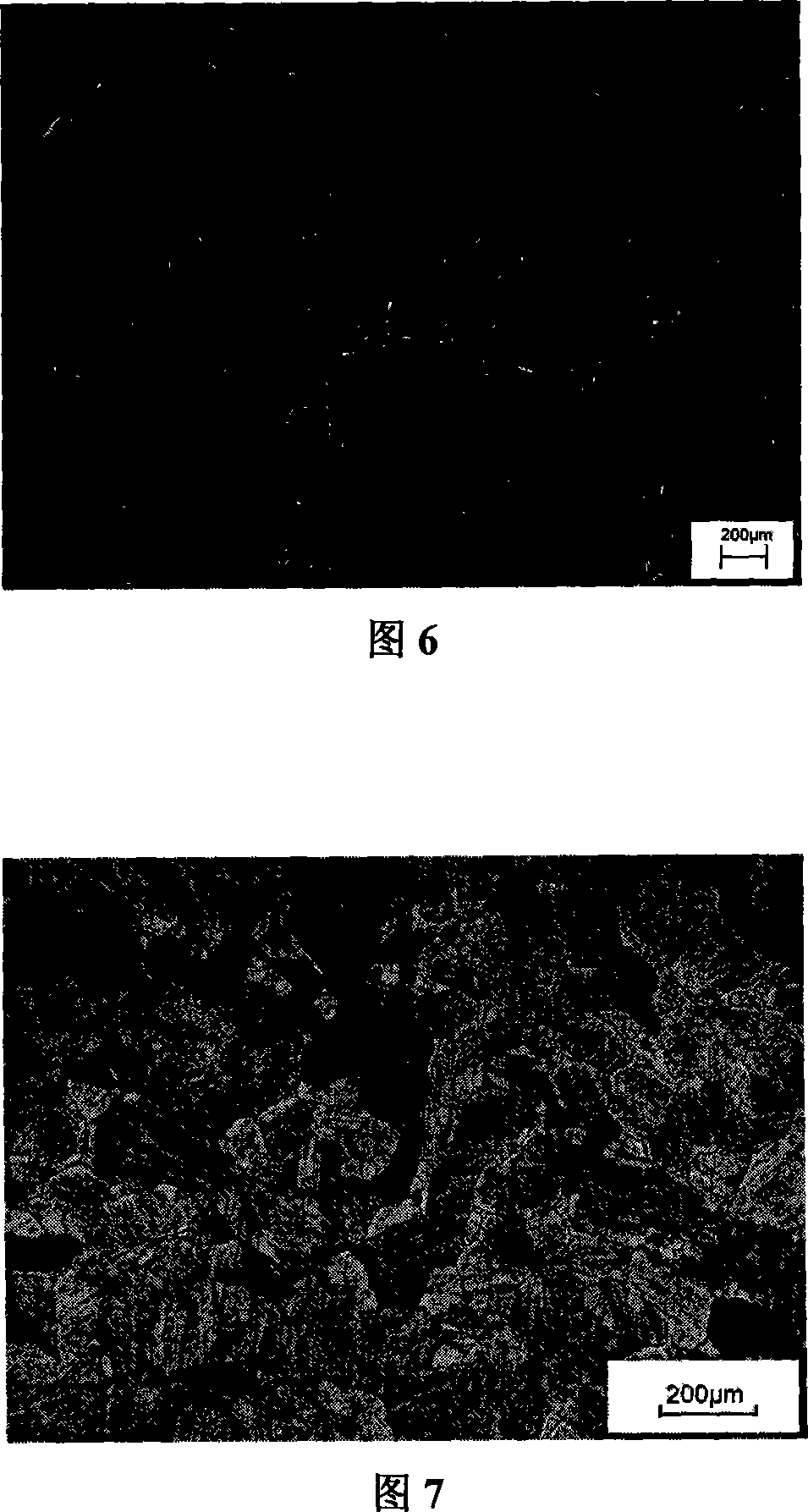Heat treatment process for large size as-cast high-Nb TiAl-base alloy to obtain complete lamellar structure
A heat treatment method and alloy-based technology, which is applied in the field of intermetallic compounds, can solve problems such as uneven distribution of alloying elements, unfavorable alloy mechanical properties, and increased segregation severity, and achieve small grain size, simple high-temperature annealing heat treatment process, The effect of reducing the processing cost
- Summary
- Abstract
- Description
- Claims
- Application Information
AI Technical Summary
Problems solved by technology
Method used
Image
Examples
Embodiment 1
[0016] The chemical composition of the alloy used in the experiment is Al: 45, Nb: 8.5, W: 0.2, B: 0.2, Y: 0.02, the balance is Ti (atomic percentage at.%), and the composite of vacuum self-consumption + self-consumption solidified shell is adopted Smelted by smelting process. Figures 1 and 2 show the original microstructure of the alloy sample before heat treatment. It can be seen from the figure that the large-scale cast high-niobium TiAl-based alloy is composed of γ / α 2 Near-lamellar structure composed of lamella clusters and a small amount of γ and β (B2) grains distributed between the lamella clusters. According to the previous research of our research group, there are three kinds of segregation in the alloy structure, which are respectively defined as: S-segregation (the arrow in Figure 2 has pointed out several areas: black contrast), β-segregation and α-segregation (as shown in Fig. 3), their presence greatly reduces the mechanical properties of the alloy.
[0017] P...
Embodiment 2
[0020] Put the alloy sample with the same alloy structure as in Example 1 and the size is 40 × 40 × 40 mm in a crucible and put it into a heat treatment furnace with a furnace temperature of 1350 ° C for 30 hours, then take out the sample and put it into the furnace immediately. Keep the temperature in a heat treatment furnace at 1050°C for 45 minutes, and finally take out the sample and cool it to room temperature in air. Observe the evolution process of the tissue at different times of incubation.
[0021] The experimental results show that the alloy sample can obtain a uniform full lamellar structure at 1350 ° C for 30 hours, and the average grain size of the lamellar cluster is 240 microns.
Embodiment 3
[0023] Put the alloy sample with the same alloy structure as in Example 1 and the size of 60×60×60 mm in a crucible and put it into a heat treatment furnace with a furnace temperature of 1370° C. for 18 hours, then take out the sample and put it into the furnace immediately. Keep the temperature in a heat treatment furnace at 1050°C for 45 minutes, and finally take out the sample and cool it to room temperature in air. Observe the evolution process of the tissue at different times of incubation.
[0024] The experimental results show that the alloy sample can obtain a uniform full lamellar structure at 1370 ° C for 18 hours, and the average grain size of the lamellar cluster is 185 microns.
PUM
| Property | Measurement | Unit |
|---|---|---|
| Average grain size | aaaaa | aaaaa |
| Average grain size | aaaaa | aaaaa |
| Average grain size | aaaaa | aaaaa |
Abstract
Description
Claims
Application Information
 Login to View More
Login to View More - R&D
- Intellectual Property
- Life Sciences
- Materials
- Tech Scout
- Unparalleled Data Quality
- Higher Quality Content
- 60% Fewer Hallucinations
Browse by: Latest US Patents, China's latest patents, Technical Efficacy Thesaurus, Application Domain, Technology Topic, Popular Technical Reports.
© 2025 PatSnap. All rights reserved.Legal|Privacy policy|Modern Slavery Act Transparency Statement|Sitemap|About US| Contact US: help@patsnap.com



